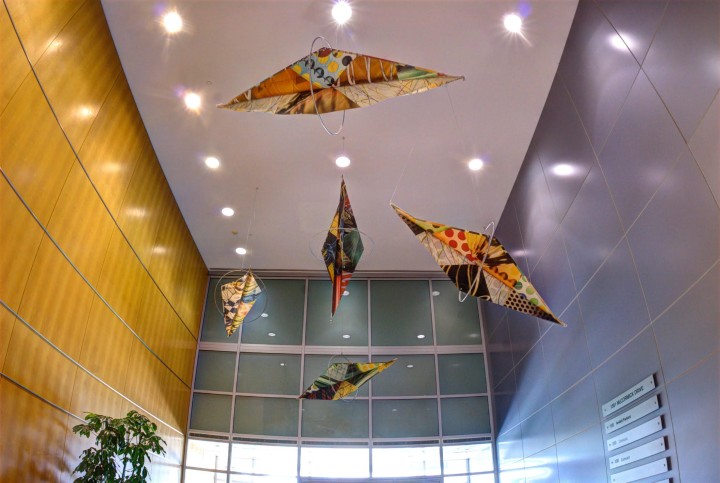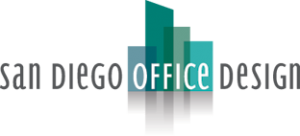Art is a critical component — on par with light, air, ergonomics, and quiet spaces — in the ongoing conversation about methods for making employees feel better about their environment and more productive at work. Jeffrey Sklaver, a principal at ArtMatters, explores why more designers don’t specify more art, and shares four reasons why it’s time to start.

Why don’t more designers specify art? It isn’t that they don’t appreciate art — indeed, I believe that they do: many designers come to the profession from a visual arts background. The problem is that art is viewed by many businesses as a nicety and not a necessity. The design community needs to educate its clients as to the importance of including art in the scope of work for the reasons described below. They also need to make their clients aware that even if they may not be considering purchasing art before moving into their new or renovated space, by at least planning for it in the design stage, they can avoid costly retrofits later, especially for any lighting or bracing that might be required.
Here are four reasons designers should specify more art, more often:
It enlivens open, glass-enclosed offices

In the case of large, open, collaborative areas, art is being used to break up and define a space. The chosen works are typically larger pieces to better hold the larger walls. In these areas, designers are incorporating feature walls for art. Designers are also using more kinetic sculpture to take advantage of high ceilings and murals for large expansive areas. The larger open spaces also allow for use of more art glass and innovative light installations. Textile art is also being used to soften the feel of a space and as a sound-buffering agent.
Art is also being used as a focal point for lunch and lounge areas and other third spaces where people congregate for ad hoc collaboration and flexible working.
Additionally, with the decrease in the number of individual offices has come the growth in the number of meeting rooms, huddle areas, and quiet rooms where people needing privacy can get away. These rooms also require art.
The type and style of art being selected and how it is being displayed is also evolving. Traditional landscapes are giving way to contemporary abstracts to better complement contemporary workplace design. There is also a growing use of photography — especially black and white photography and photographic abstracts — because of their contemporary feel.
It makes a statement about company culture

An office’s design only goes so far in identifying how a company wants to be perceived by its employees and clients; art increases the visual cues. A law firm that does a lot of international business might want to have art that reflects that scope. A lobbying organization in Washington might want dynamic photos of the Capitol, the White House, or iconic images of the monuments to remind its clients of their proximity to the seat of power. Hospitals and other healthcare facilities use art (primarily nature and landscape images) to provide a calming and peaceful distraction from an inherently stressful environment.
In developing its art package, WisdomTree Investments, Inc., a large New York-based financial services firm, selected an impressive series of large, frameless, sepia-toned original photographs of New York for its main corridor leading to its boardroom overlooking midtown Manhattan. The quality and integrity of the photos selected speak to the quality and integrity of the firm, while the New York images provide a backdrop for its location in the heart of world’s financial marketplace.
It’s also an effective branding tool: the right art can support a company’s corporate identity, history, values, and mission, and create a sense of place and purpose.
It contributes to a healthier work environment

Properly executed, art energizes and personalizes a workspace. It reflects an attitude, sets a tone, and — more importantly — ties together all the design elements. It is also a critical component — on par with light, air, ergonomics, and quiet spaces — in the ongoing conversation about methods for making employees feel better about their environment and be more productive at work.
While furnishing and lighting are effective ways for meeting the physical needs of the employees, art meets their emotional needs. In a survey conducted by the Business Committee for the Arts and the International Association of Professional Art Advisors of more then 800 employees of 32 companies that displayed art in the workplace, 94 percent of respondents agreed that art enhanced the work environment; 78 percent said that it contributed to reduced stress; 64 percent saw increased creativity and productivity; and 67 percent said that it enhanced morale. As a result, art should be part of any discussion regarding health and wellness initiatives in the office.
It’s a creative way to help with wayfinding

Art is a great wayfinding tool where colors and images can be used to visually reference an area or location. TheFinancial Services Roundtable named its conference rooms after U.S. presidents in its new D.C. offices. In addition to signage, it commissioned a graphic design artist to create large colorful, contemporary, representative pieces of each president that are prominently display in each conference room, bringing color and character to the space.
At the end of the day, it is incumbent upon the design community to begin discussing art with their clients at the outset of the design process rather then leave it as an afterthought and a potential missed opportunity.
Article courtesy of WorkDesign
